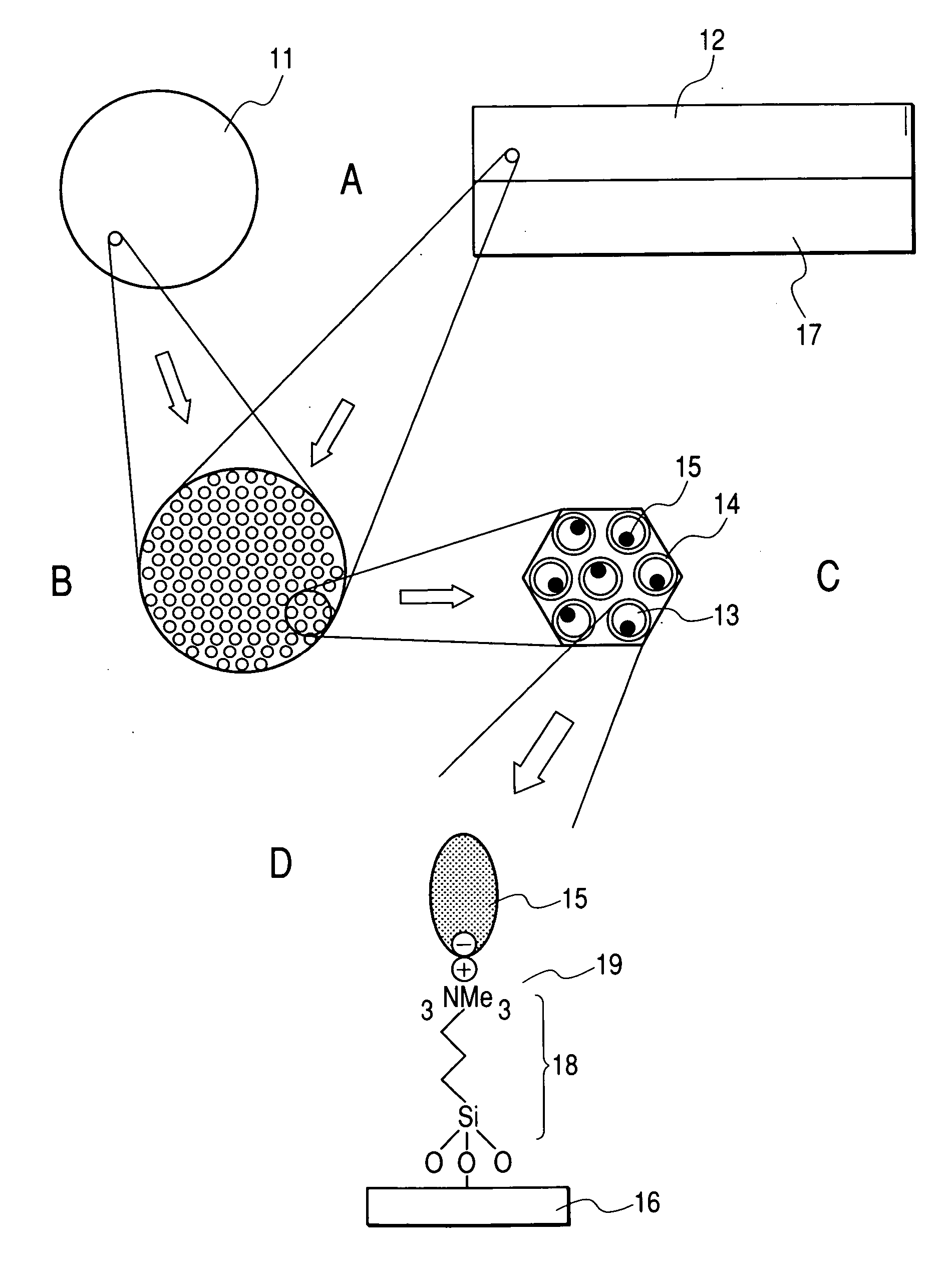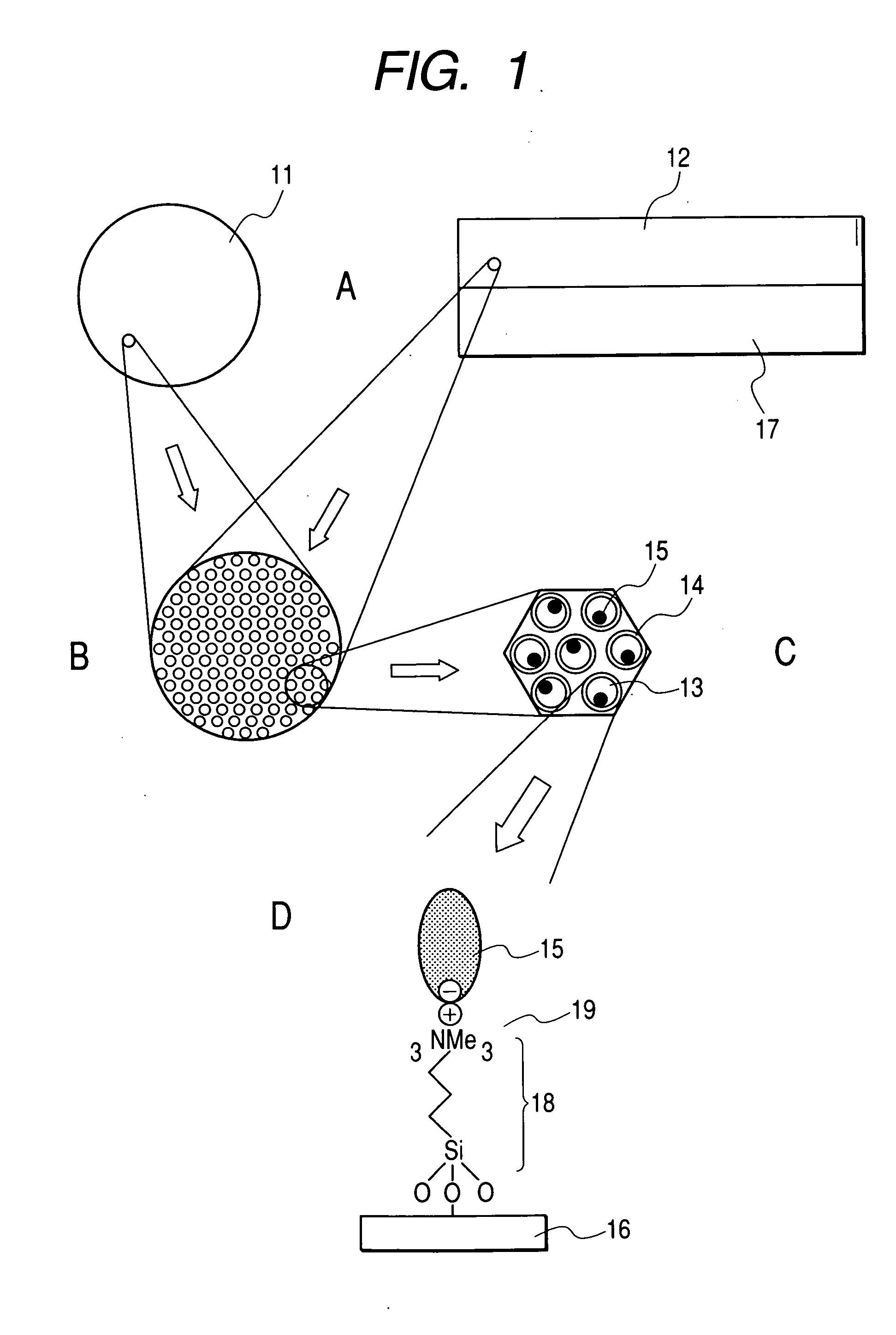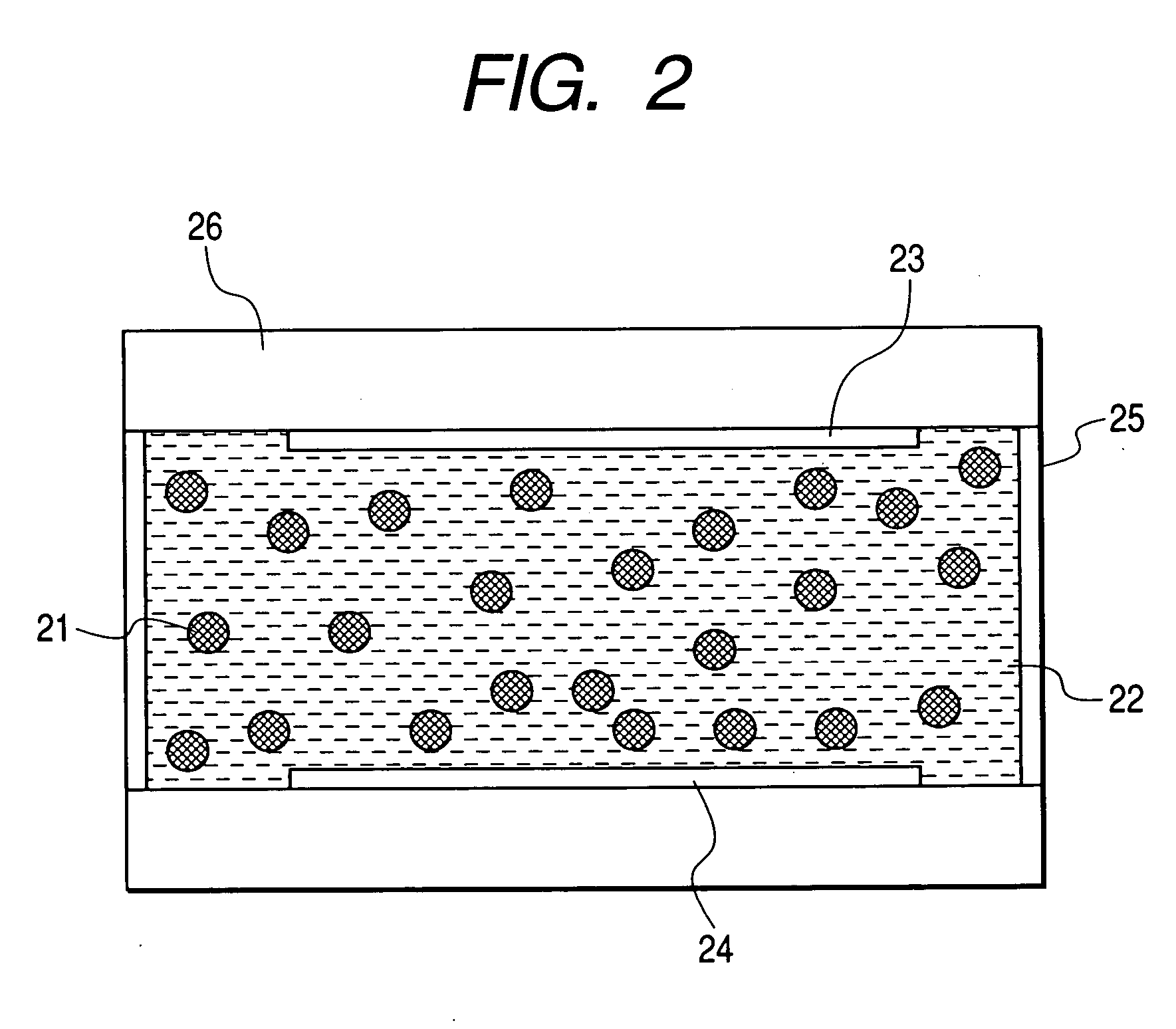Colored material and method for producing the colored material
a technology of colored materials and pigments, applied in the field of coloring materials, can solve the problems of inks with many problems, impair dispersibility, and inks with common problems, and achieve the effects of good color development, good color development properties, and good weather resistan
- Summary
- Abstract
- Description
- Claims
- Application Information
AI Technical Summary
Benefits of technology
Problems solved by technology
Method used
Image
Examples
first embodiment
[0028] In FIG. 1, a colorant of the first embodiment of the present invention is schematically illustrated (A). The colorant is shaped as a particle or a film according to the purpose. There are shown a colorant particle 11 and a colorant film 12 formed on a substrate 17.
[0029] B is a schematic magnified illustration of a part of the particle or the film in A, showing the surface of the particulate colorant or a vertical cross section-of the film-shaped colorant where fine pores of porous silica are uniformly arranged.
[0030] C is a further magnified illustration of a part of B, showing that the internal wall of the uniform mesopores 13 is covered with a material 14 having a function of binding anionic substances, and carrying an anionic dye 15 thereon. D is a further magnified schematic illustration, in which a silanol group present on the surface of the pore wall 16 of the porous silica and a molecule 18 of a silane coupling agent are coupled to constitute the material 14 having ...
second embodiment
[0063] In FIG. 4, a colorant of a second embodiment of the present invention is schematically illustrated in A. The colorant is shaped as a particle or a film according to the purpose. The components the same as in FIG. 1 are represented by the same numerals.
[0064] B is a schematic magnified illustration of a part of the particle or the film shown in A, and shows a surface of a particulate colorant or a vertical cross section of a film-shaped colorant, indicating that fine pores of porous silica are uniformly arranged.
[0065] C is a further magnified illustration of a part of B, showing that internal wall of the uniform pores 13 is covered with a material 14 having a function of binding anionic substances, and carrying an anionic dye 15 thereon.
[0066] D is a further magnified schematic illustration, and, on at least a part of the surface of the pore wall 16 of the porous silica, a material 14 having a function of binding anionic substances is provided, where the material 14 is com...
example 1
[0087] In this Example, a blue anionic dye was adsorbed on the mesoporous silica particles with an average diameter of about 180 nm, and the particles were applied to an ink for an ink jet printer. The pores of the mesoporous silica particles had been modified with TPTCA to prepare the particles of blue coloring material,
[0088] [Preparation of Mesoporous Silica Particles]
[0089] 0.25 g of n-hexadecyltrimethyl ammonium bromide (manufactured by Kishida Kagaku Co.), which is a cationic surfactant, were dissolved in 78.2 ml of pure water, to this solution 25.3 ml of a 30% ammonia aqueous solution and 120 ml of ethanol were added to obtain an alkaline solution of the surfactant in an ethanol-water mixture. The pH of the surfactant solution was 12.2. The surfactant solution was heated to 70° C., to which 0.35 ml of tetramethoxysilane were added. The mixture was stirred for about 2 hours at 70° C., then transferred into a pressure-resistant container having a fluorinated resin interior, an...
PUM
| Property | Measurement | Unit |
|---|---|---|
| width | aaaaa | aaaaa |
| diameter | aaaaa | aaaaa |
| size | aaaaa | aaaaa |
Abstract
Description
Claims
Application Information
 Login to View More
Login to View More - R&D
- Intellectual Property
- Life Sciences
- Materials
- Tech Scout
- Unparalleled Data Quality
- Higher Quality Content
- 60% Fewer Hallucinations
Browse by: Latest US Patents, China's latest patents, Technical Efficacy Thesaurus, Application Domain, Technology Topic, Popular Technical Reports.
© 2025 PatSnap. All rights reserved.Legal|Privacy policy|Modern Slavery Act Transparency Statement|Sitemap|About US| Contact US: help@patsnap.com



